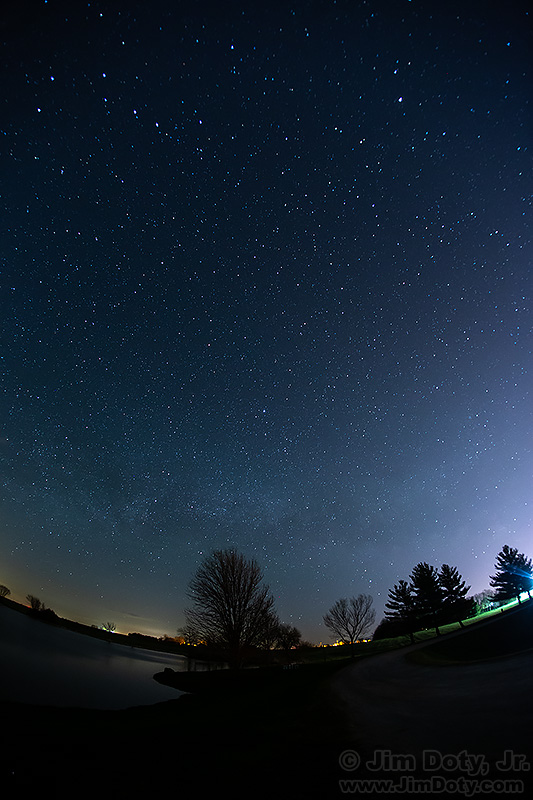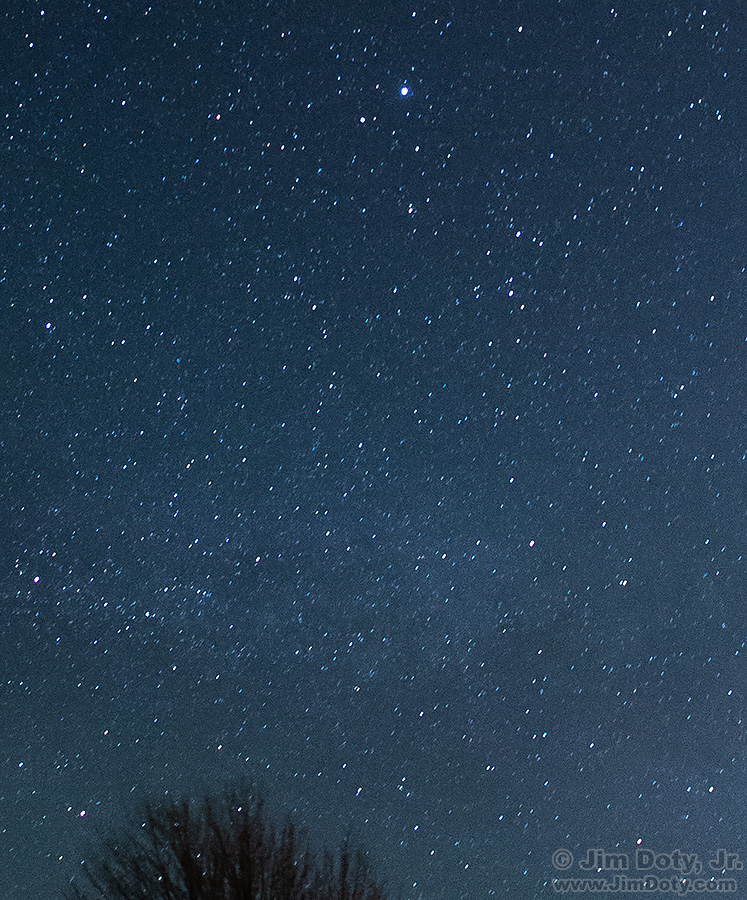
I had fun early, early this morning. I saw two fireballs and four meteors. Not one of them was thoughtful enough to occur in front of my camera lens. Meteors are fast and streak by in a fraction of a second. Fireballs (very bright meteors) burn up more slowly in the atmosphere and can last for a few seconds.
This photo was taken in southern Iowa, looking generally east. The Big Dipper, Arcturus, Bootes, and Corona Borealis are toward the top. Vega and Lyra are near the middle, and Cygnus is just above the central tree.

To give you an idea many stars were captured in this image, this is a cropped closeup of the center of the image with the central tree at the bottom and Vega at the top.
I used a 15mm super wide angle lens that would capture everything from the horizon to the stars directly overhead. This lens has a 180° diagonal angle of view. Such a wide angle bends things at the edges of the frame so the horizon is bowed and the Big Dipper looks a bit wonky.

The camera clock says the photo was taken at 1:28:59 AM CDT. But the satellite data embedded in the photo says 6:30:14 AM UTC, so my camera clock was off by 1 minute and 15 seconds. Despite this Google Earth Pro map, I was actually on the north side of the road. Consumer satellite data can be 30 or so feet off. Military and commercial satellite data is much more accurate. A surveyor told me the commercial satellite data he pays for is accurate to 2 cm.
A few Lyrid meteor stragglers should be visible for the next 3 or 4 nights, so it is not too late to go out and look for them.
Photo Data: Canon 5D Mark III, Canon EF 15mm lens, f/4.0, 30 seconds, ISO 3200.
Link
